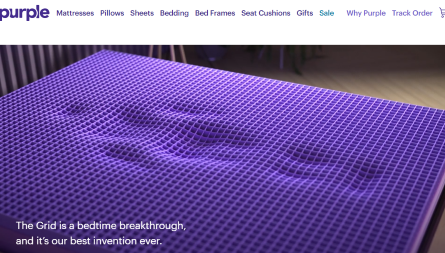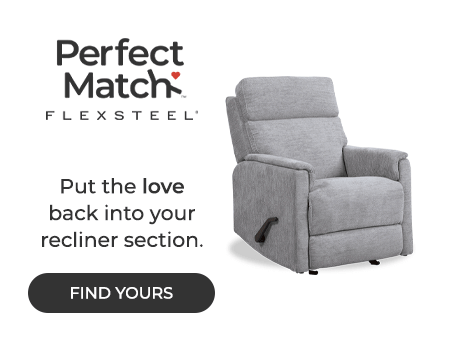Case goods, upholstery resources compete to secure placements among retailers still dealing with high inventories
HIGH POINT — Competition in a post-pandemic marketplace rose to new heights as wood and upholstery resources sought to capture the attention of retailers still burdened by high inventory levels that include products they haven’t yet moved from their warehouses onto sales floors.
Thus, many came to the recently concluded April High Point market with aggressive product launches that gave retailers the ability to choose among the best of the best. However, this also included product at lower price points aimed at providing added value and relief to consumers still burdened by inflation.
Wood resources in particular with high inventories of their own have had to sharpen price points in recent months in order to flow goods. For many, this has resulted in significant losses as they have had to lower prices on goods produced and shipped when container prices were much higher than they are now.
The industry is also facing competition from other areas such as travel, dining and entertainment that many people postponed during Covid when they instead focused on furnishing their homes.
“Business at retail is soft,” said Rusty Morris, vice president of sales and marketing at case goods importer American Woodcrafters. “We have pockets that are better than others, but it seems like case goods is especially soft. This is the tail end of a monster two years (of demand for home furnishings) and it is bound to slow down a little.”
That said, he noted that the company has done a good job managing its inventory levels and that its sell-through rate has been steady. As a result, it is not having to do a lot of discounting.
Others said they also have seen the slowdown at retail, which resulted in some lighter traffic than anticipated at market, particularly among dealers with too much product already.
“Everyone is sitting on too much inventory, so some retailers didn’t come to market,” said Carl Lovett, national sales manager at Sunpan. “They are working through their inventories.”
He noted that many suppliers also are burdened with inventories they purchased when freight rates were much higher, meaning those goods are now competing with newer goods priced more competitively as they can ship at the lower container rates.
“Everyone has this dilemma of what do you do with the old stuff,” he said. “It depends on your warehouse space and your financial situation. Some people have to turn that into cash because they are not that well capitalized.”

That said, the company received strong commitments on some of its newest product shown at market including new outdoor furniture collections and a new case goods collection called Kalla made with oak veneers and available in two finishes, a lighter natural tone and a darker finish called Charcoal.
Domestic producers have an advantage in that they haven’t had to deal with inventories produced when freight rates were so much higher than they are now. Still, the environment is challenging because of the slowdown at retail and competition with others that are discounting product.
“The whole industry is in a recession and business is extremely slow,” said Doug Bassett, president of Vaughan-Bassett Furniture Co., describing the slowdown as a hangover from two and a half years of peak business during Covid. “That we are now paying for all that good business should not be a surprise to anyone.”
He noted that the competition this market was intense as many resources were offering discounts upwards of 50% off to flow canceled or discontinued goods. While the company offers some market specials across the line for new placements, it is not doing any major discounting in order to flow goods.
“Many of us are having to compete with that type of product that is out there now,” he said. “It makes it tough to compete for placements as we don’t have goods that need to be closed out or blown out.”
Peter Tielmann, chief executive officer of domestic upholstery manufacturer Palliser, agreed that retail has been soft of late, particularly coming off of two years of extremely high demand.

“Business has been soft, no question. … Those were two abnormal years,” he said, adding that the question is what will the new normal look like moving forward.
He said that while Palliser is well positioned in the mid to premium price points, it likely is feeling the slowdown less than those in lower price points. However, as a custom manufacturer, it has still seen some impact related to high inventory levels at retail.
“They have been aggressive pushing customers to inventory versus made to order,” he said. “Now it is shifting back more to made to order.”
He said the company — known largely for its motion assortment — also has made a concerted effort to bolster its stationary upholstery offerings. This, along with its recently launched Studio gallery program at retail, is bringing new customers to the mix.
Other resources including domestic manufacturers and importers alike, also diversified their mix this market.
Spectra Home made a big push in outdoor furniture this market, which was in addition to introductions in its indoor residential upholstery line.
Jim Telleysh, senior vice president, said that traffic was steady during the market and that moods appeared to be positive. He noted that interest in the line also was strong as many dealers will need product months from now, when many are hoping business conditions improve.
“People have pretty high expectations and feel good about the business,” he said of dealer moods overall despite still high inventories and some softness at retail. “Inventory levels are tough for some and not so much for others. We are at the upper middle end, so our consumer is still buying.”
Others said that while traffic seemed soft at market, many buyers also made commitments on new goods. However they were just more selective in what they were choosing for their floors.
And this is where some of the sharper price points came into play.
Lifestyle Enterprise, for example, sharpened its opening wholesale prices on five-piece bedrooms from $250 to $199. It introduced about 30 new bedrooms, and based on reaction at market, it expects to put about a third of these into production, said Derrick Ng, president.
“I have seen more commitments this April compared to October,” he said of business activity at market, noting that some of its retail accounts have been clearing out inventory to make room for new product.
And for Lifestyle, focusing on the most popular groups at market allows its source factories to produce and flow product in higher volumes.
“If the factory gets volume, it helps with efficiency,” he said.
New Classic also offered promotional groups across upholstery and case goods. These included nine new power motion upholstery groups starting at $499 for a sofa and 11 new bedrooms starting at $899 for four pieces and topping out around $3,799. It also showed 12-15 new dining sets starting from $399 to $499 for a table and four chairs. These topped out around $2,799, affording its customers a good, better, best story within the line.

However, the company told Home News Now that retailers were driven to the sharper price points in particular as they are providing items they can promote to drive people into the store.
This helped create a dynamic market, officials said.
“Customers are still coming to market and are still buying,” said Bill Dominguez, vice president of research and development, adding that their open to buy appeared stronger than the past two markets.
AICO said its attendance was the best that it has been in the past few years at the April market. It also reported strong interest in its new collections.
“We continue to stay aggressive in our product development to bring our customers compelling and innovative merchandise to help them navigate the current environment and delight their consumers with fresh looks,” said David Koehler, president. “We were very excited about our customers’ reactions to our two new case goods collections, St. Charles and Tuxedo. In addition, we continue expanding our upholstery offering and were very pleased with the response to our four new collections — Cannes, Carmela Zinc, Salerno and Belmont Place. It was a strong High Point market.”
Klaussner also reported its best market in recent memory as dealers responded well to two new case goods collections in its licensed Trisha Yearwood Home line. Because of the response — orders came from around the country — it made nearly all pieces in its Today’s Traditions collection available in two finishes, a light natural tone and a darker wood tone. Previously, the two finishes were limited to certain items.
Response also was strong on a third standalone non-licensed case goods collection it introduced called Crossroads made with cathedral cut oak veneers in a mid-tone brown finish.

“Our case goods business picked up in the last 60 days and is going in the right direction,” said Ben Radoll, senior vice president of case goods and bedding.
And while some inventories appear to be improving, he added that retailers also are making sure their stores have the right mix of product.
Neil McKenzie, director of product development at case goods resource Hekman, said that traffic was better than a year ago but agreed that business could be a challenge particularly given still high inventory levels.

“Overall, orders are going to be tough, but the commitments are there,” he said, noting that it received an extremely good response to its new 26-piece Organic Living case goods collection, which is expected to hit retail this fall. “We knew coming into market it was going to be that way.”
How orders materialize from commitments, he said, will largely depend on the inventory situation at individual retailers.
“They have groups in the warehouse, but can’t get it on the floor because they don’t have a lot of open slots on their floors,” he said. “The slowdown happened faster than anyone anticipated and it looks like it will stretch out longer. … They were initially selling anything they could get their hands on and now customers aren’t walking in the door like they were before.”
That said, he believes retailers are still looking for something different that will make a statement on their floors, which is one reason that he believes Organic Modern did so well. In addition to the solid mango wood construction, it features dramatic hand-carved wavelike patterns on the drawer fronts of various case pieces. This will also be hand-carved in solid wood in production, unlike some more inexpensive resin molds produced by most other case goods resources.




